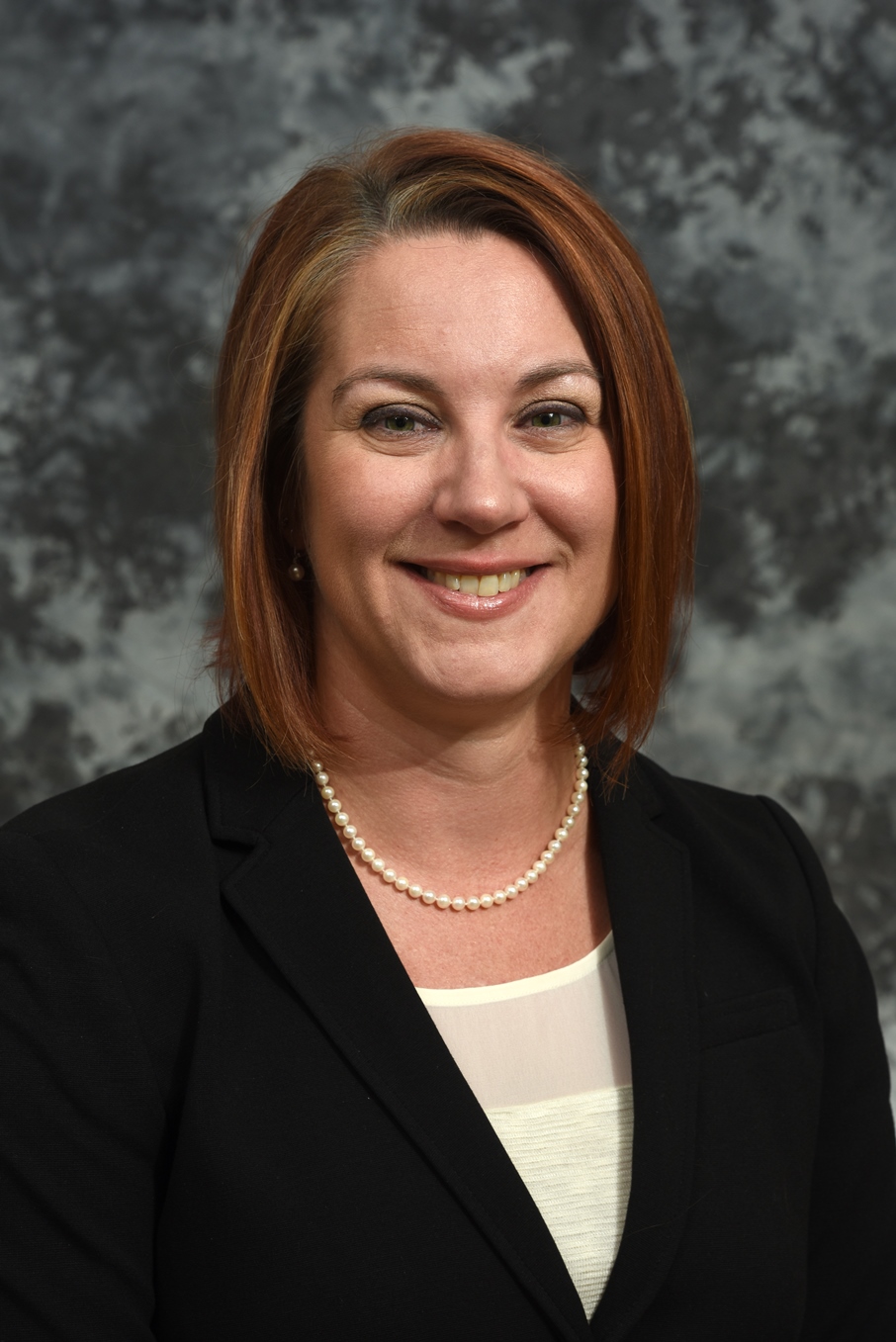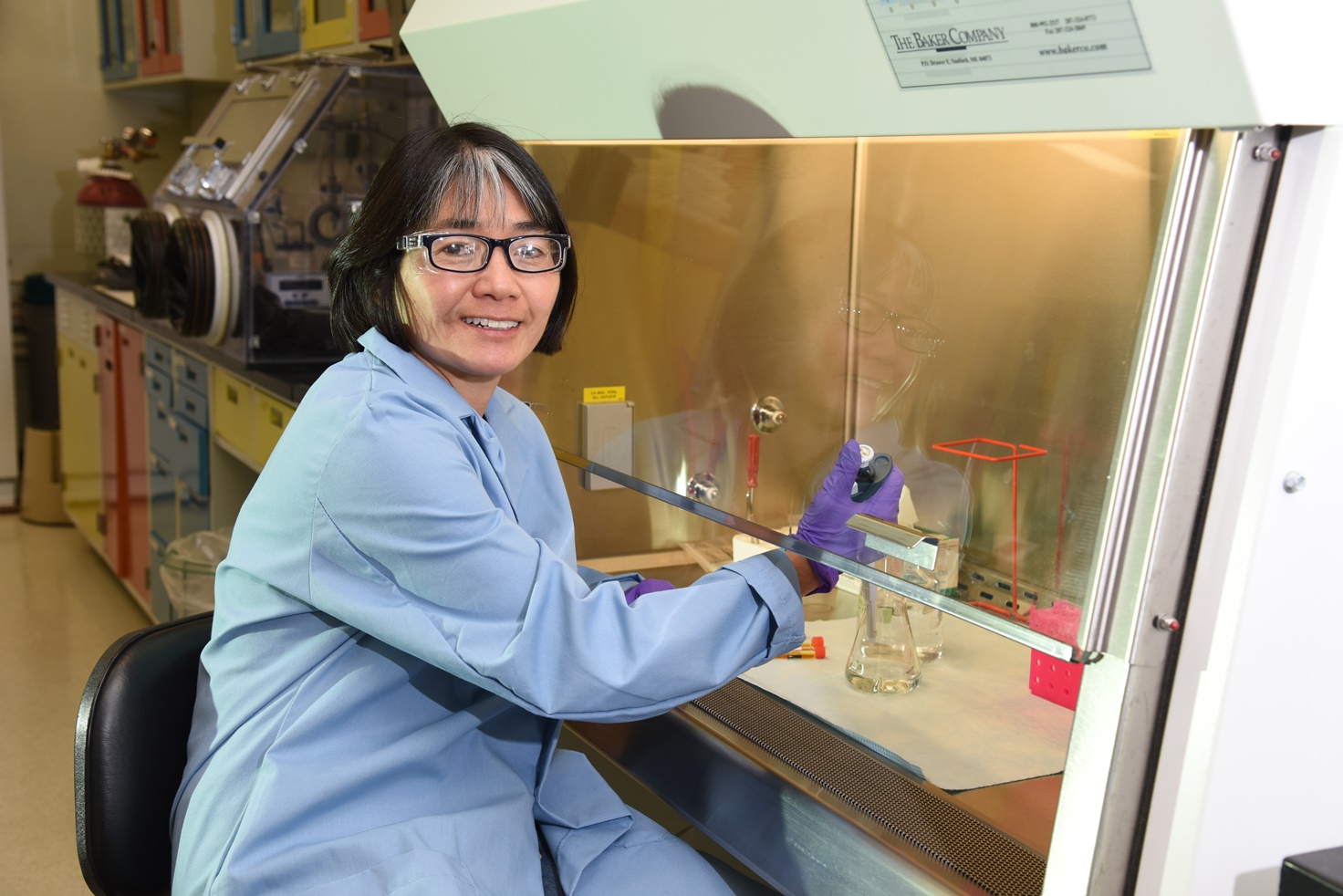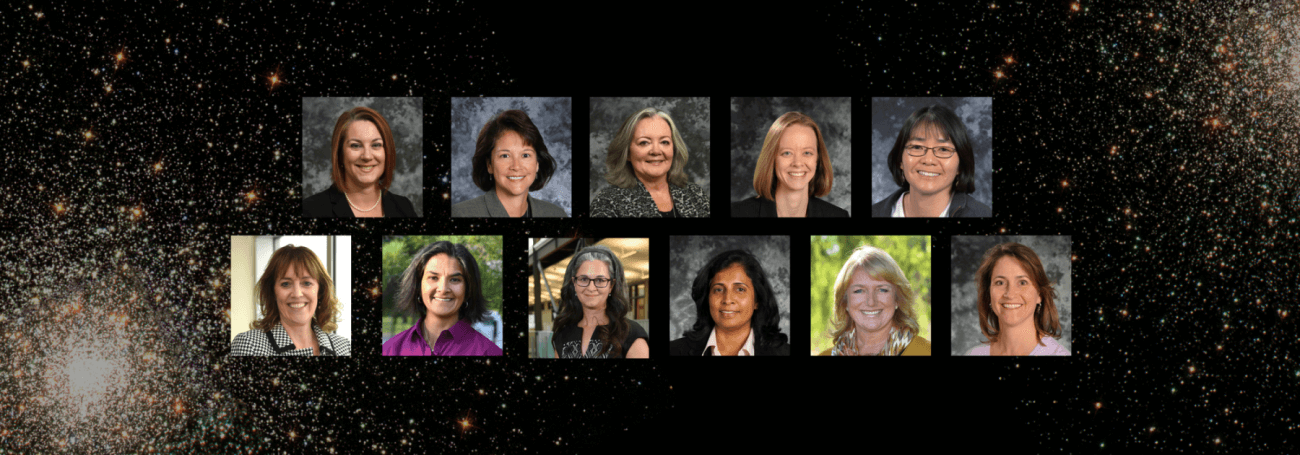Many have heard of scientists like Marie Curie and Lise Meitner, famous women from history whose scientific research has changed the world. Organizations that embrace inclusion and encourage a diversity of opinions and backgrounds perform better and come up with more innovative solutions. At INL, we have contemporary history makers working around us every day. As part of our monthlong celebration of Women’s History Month, we’re highlighting three female scientists who will be in the history books of the future. They share their stories about how they became interested in science, their pathway to success, and advice for how to succeed in any job field.
Meet Dr. Heather Chichester
Dr. Heather Chichester is the director of the Post-Irradiation Examination Division at INL’s Materials and Fuels Complex. She joined INL in August 2006 as a researcher working on nuclear fuel development and moved into her current role two years ago.
Chichester holds a Ph.D. in nuclear engineering from the Massachusetts Institute of Technology and earned her bachelor’s in nuclear engineering at University of Wisconsin-Madison. Prior to joining INL, she worked at Knolls Atomic Power Laboratory in New York and Sandia National Laboratories in Albuquerque.
“What appealed to me about INL,” she said, “was the ability to do all steps of an experiment – researching, building, and testing fuel – at one location. INL is one of only a few places in the world where this is possible.”

Chichester’s dad worked as a civil engineer and her mom worked as a nurse, so growing up, she always knew a STEM career was a possibility. “When I was little, I didn’t know exactly what an engineer did,” she said, “but I really enjoyed math and science and knew engineers did those things.”
A lightbulb went on when Chichester had the opportunity to participate in a summer high school program at the University of Michigan research reactor. “It was incredibly interesting. That’s when I first thought, ‘this is something I’d like to know more about,’” she said.
Her freshman year, she enrolled in Nuclear Engineering 101 and was captivated by the topic. The rest is history.
Chichester said no two days at her job are alike and there’s always a new challenge. “There are always unexpected things to figure out how to overcome, but that’s what keeps my job interesting,” she said.
One of her favorite things about the job is getting to interact with researchers, operators and engineers, and have them share their expertise. “My colleagues have so many different technical and experience bases – I really enjoy hearing their perspectives and their visions.”
Chichester’s advice to others just beginning their careers: “Take advantage of opportunities to try something new and different. Don’t let the fear of the unknown stop you.” She also emphasized the importance of mentoring. “There are mentoring opportunities in all different job levels and fields,” she said. “We often think of a mentor relationship as working with someone senior to us, but mentors can be at all levels, including parallel to you.”
Although everyone’s career journey is different, Chichester is happy with her path and the knowledge that her job makes a difference. “I love being a nuclear engineer,” she said. “I get to spend my days at an amazing research facility with a great team investigating advanced nuclear fuels. What we’re doing will change the world’s energy future.”
Meet Dr. Yoshiko Fujita
Dr. Yoshiko Fujita is a senior scientist in the Biological and Chemical Processing Department at INL where she specializes in biogeochemistry research. In the biogeochemistry field, scientists look at the chemical, physical, geological, and biological properties of the environment. For Fujita, that means researching environmental sustainability and water quality and studying the interactions between rare-earth elements (critical materials) and microorganisms to improve metal recovery techniques.
When Fujita was little, she never imagined having the job she has today. “I wanted to work in social justice and change the world,” she said. But she took a wide variety of classes at her liberal arts college and liked chemistry, “so that’s the major I chose.” She earned a Bachelor of Arts in chemistry and started working for an environmental consulting firm in Washington, D.C., expecting to go to law school. “In that job, I realized there were already plenty of lawyers in D.C., so I decided to do something else,” she said.

She entered Stanford University’s master’s of science program in civil engineering, then went on to earn a Ph.D. there in civil engineering with a specialty in environmental engineering.
Fujita was recruited to INL as a postdoctoral researcher in fall 1998 to work on subsurface science. “Culturally, Idaho was a lot more conservative and had less going on,” she said. “But I was excited to explore the area.” She feels lucky to have found a place she liked where she loves the science, does interesting work and really enjoys her colleagues. She enjoys soccer, skiing, hiking, bike riding, and when the weather allows, she even plays Ultimate Frisbee with colleagues during their lunch break.
Fujita said her biggest challenge over the years has been the loss of a critical mass of people at INL doing environmental science. Sometimes in the research world, funding and programs come and go, and unfortunately, when programs go away, so do people.
She coped with the shrinking of her research circle by taking a sabbatical in 2013. During her year of professional leave, she worked as a visiting faculty member in the department of chemistry at the University of Copenhagen in Denmark. In that role, she got to work with students directly and advise them on their theses.
Like the other women featured in the article, she doesn’t feel like she is any more of a history maker than anyone else. “Everybody is making history,” she said. “We’re all part of the story.”
She said it should be normal to see women working in all areas of an institution, but we’re not there yet. Fujita is still often one of the only women at meetings and the technical world is still very much an “old boys club,” but hopefully, that will change. “It would be great to offer opportunities for all types of people, including outsiders, to take leadership roles,” she said. Having people who think differently and have different backgrounds will benefit scientific innovation.
Fujita recently participated in INL’s My Amazing Future, an event where 150 eighth-grade girls from across eastern Idaho engage in hands-on science, engineering, and math workshops. “I really enjoyed spending the day with the girls,” she said. “We discussed how there’s no reason science should have this reputation for being so difficult. We use science all the time in our everyday lives without even realizing it – in cooking, in finding the best way to get to a location. Science shouldn’t be something we talk about being good or bad at – it’s just another skill.”
Meet Dr. Shannon Bragg-Sitton
Dr. Shannon M. Bragg-Sitton is a Systems Integration Department manager who has worked at Idaho National Laboratory since 2010. Prior to coming to INL, she worked at Texas A&M, Los Alamos National Laboratory and NASA Marshall Space Flight Center. Bragg-Sitton initially came to INL to work on space nuclear power and propulsion, but always had the goal to broaden her knowledge base to other areas of nuclear. “I’ve learned to never be afraid to try something new,” she said. “The breadth of experience I have gained at INL by going outside my comfort zone has been invaluable.”
Since joining the laboratory, Bragg-Sitton has worked in many areas, including nuclear fuel performance and design and energy systems. In addition to her current role in nuclear systems design and analysis, she is working on a new program under the U.S. Department of Energy (DOE) that is investigating microreactors, or very small modular reactors.
Although she doesn’t get to do hands-on work inside a lab as much as she used to, she does have the opportunity to travel often while working with collaborators to develop programs. In fact, she’s on travel about two weeks out of every month. “Traveling is one aspect of my job that has provided me a great understanding of what’s going on across the DOE complex, at academic institutions and internationally,” she said.

Growing up in Albuquerque, New Mexico, near a university and national laboratory, she was exposed to science at a young age. “When I was ten I wanted to be an astronaut,” she said. “In high school, I had the opportunity to work on the Topaz-II program, where I worked with scientists and engineers from both the U.S. and Russia on space nuclear power systems.” It was during that time Bragg-Sitton realized that while astronaut jobs were hard to come by, there were lots of opportunities in related fields to advance the space program. “I realized I could be involved even if I wasn’t an astronaut,” she said.
Bragg-Sitton majored in nuclear engineering as an undergraduate student and got her first Master of Science degree in medical physics, a rapidly advancing field that would provide a highly-marketable degree. However, her interest in space nuclear brought her back to that field and she went on to earn an M.S. and Ph.D. in nuclear engineering at the University of Michigan, conducting her research via collaboration with NASA.
“What gets me excited is working on something that will impact the future of our nation. What we’re doing now actually means something,” she said. Looking back in history, we see some serious titans, but at the time, they were just like you and me. She said knowing the impact of her work is extremely exciting, a little overwhelming, but keeps her motivated. “It helps get you through the tough times,” she said.
Bragg-Sitton said overall, she has had a pretty good experience working in a male-dominated field. “I’m often the only woman in the room, and sometimes people aren’t used to working with women in technical leadership positions,” she said. Most people don’t do it intentionally, but there can be an unconscious bias about what a leader looks like. There aren’t that many female experts in some technical fields, so it can take a mental shift to overcome the unconscious bias. Overcoming these challenges is important to ensure that innovation is not impeded. The key to breaking through it is to 1) recognize bias exists, and 2) foster a culture of listening. “Teams can accomplish much more when people listen more and talk less,” said Bragg-Sitton.
All three scientists had one shared theme: It’s not uncommon to be the only woman in the room. For good or bad, as a woman in a technical field, you will be noticed. So you might as well shine.
Visit INL’s Facebook, Twitter, LinkedIn or Instagram pages and search #WomensHistoryMonth for posts or view all posts here.
Resources:
- DiversityInc webinar: Preventing High-Potential Women from Burning Out
- Report: When women thrive, businesses thrive
- Donna O’Kelly guest column: Women play key role at nation’s lead nuclear R&D laboratory





